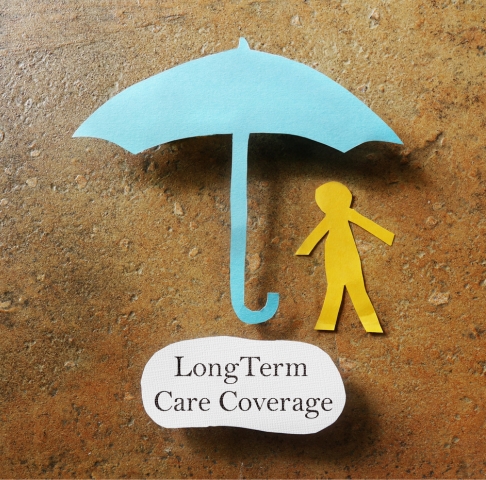Singapore has been named the world’s most expensive city1 for the ninth year in a row according to the Economist Intelligence Unit. The average cost of living is rapidly rising in every sector, including education which saw a 75.7% increase in the past two decades.
As a would-be dad, my ears always prick up when there are updates to policies like the Baby Bonus scheme and upcoming paternity benefits. While these measures are helpful for young parents, how much do they actually need to start a family?
I ask financial adviser Florence Ong, who’s a mum herself, about the dollars and cents of raising a child in the world’s most expensive city.
Note that the figures shown below are based on a conservative estimate of market prices sourced from online research at the time of writing. Actual costs may vary from family to family according to their financial choices.
How much do I need to save for each phase of my child’s life?
Florence: There are costs to consider even before your child is born. From prenatal care to a complication-free delivery, you can expect to spend S$6,000 to S$12,000 depending on whether you opt to have these services in a government or private hospital.
Then comes the postnatal confinement and care. These are optional, but I think many mothers still opt for a confinement nanny which costs around S$5,000 to S$6,000 a month. For more details on what to expect when you’re expecting, you can read this pregnancy guide.
To prepare for your child’s arrival, you will also need to purchase a cot, baby chair, stroller, baby formula and a mountain of diapers. The actual list of items is extensive and the costs can escalate rapidly without financial planning. Some families might also choose to hire a full-time live-in helper to look after the kids and house. The monthly salary for a domestic helper is typically S$400 to S$650 excluding the cost of food and other living expenses.
Once your child is two months old, you can enrol them in infant care, so that they’re looked after while you’re at work. From the age of 18 months up to seven years old, kids are enrolled in childcare centres. Monthly fees at government-supported infant care and childcare centres cost S$1,300 and S$700 respectively. The price can be astronomical if you opt for more premium schools and programmes like Montessori. You should also consider getting an Integrated Shield Plan for your child so they can recover comfortably in a class A ward or private hospital if they’re ever hospitalised. Premiums can be paid by MediSave so you don’t have to worry about forking out more additional cash for this coverage.
Some parents might also want to send their child for ballet lessons, piano lessons, swimming classes and more during their preschool and kindergarten phase.
The costs might dip slightly when your child enters primary school since school fees for Singaporeans are heavily subsidised. But then comes all these tuition centres that collect monthly fees of S$500 to S$1,000 for helping to improve your child’s performance in school. Tuition costs increase at the secondary education level as more subjects are added to the mix. There are also smaller, recurring costs like pocket money and school items that might work out to an additional S$2,000 or more a year.
Tertiary education will be another major financial milestone. Whether your child chooses local or overseas education will determine how much you’ll spend on what I’d like to term an “investment in their future”.
Tuition fees at local universities range from S$8k to S$13k per annum. This amount may double or even triple for a degree in medicine.
What if your child decides to study overseas? Thankfully, the Singapore dollar is strong, with good exchange rates for many overseas currencies including the Aussie dollar. Even studying in seemingly expensive countries like the US and UK could be manageable with proper planning.
Aside from the obvious tuition fees, remember to take into account the cost of food, lodging, transportation, visas and flights when planning to send your child overseas for studies.
What government aid is available to young parents and are these measures enough?
Florence: With a few clicks online, you can access to all the information you need on the current government programmes (or check the summary table above 👆). You may submit the online form for your child to join the scheme as early as two months before their estimated delivery date! There's also the MediSave Grant for newborns. A CPF MediSave account will be opened for every newborn, and the S$4,000 grant will be credited automatically. This grant can be used to support your child’s healthcare expenses, such as MediShield Life premiums, recommended childhood vaccinations, hospitalisation and approved outpatient treatments.
If you ask me whether these baby incentives are enough, I’d say "the more the merrier". Haha. However, I am very thankful for this set of incentives that I could receive as a parent. It definitely helps in supporting a parent’s decision to have children as the bulk of costs during a child’s early years can be covered by the Baby Bonus payouts and MediSave grant.
Of course, parents must also do their part to provide the best for their children. This means saving regularly for their future needs. It doesn’t matter if you can only set aside a small amount initially; what’s important is to have a disciplined savings habit, which will hopefully rub off on your kids.
Singlife Choice Saver is a great way to save for your child’s needs as it allows you to customise the plan's maturity date (10 to 25 years, or up to age 99). This way, you can plan ahead and ensure you get the benefit amount in time for specific financial goals at the different stages in your child’s life. And because your capital is guaranteed, you won’t have to worry about losing your hard-earned money.
Putting aside the costs of raising a child, what’s the best part about parenting? Any tips for first-time parents?
Florence: After breaking it down, it’s clear that the cost of raising a child in Singapore is high. Is it worth it? As a mother of three, I’d say the answer is a definite yes. The joy a child brings to the family is priceless.
As for parenting tips, I’d say you need to look ahead and set a proper plan in place. The Singlife milestone map is a great tool that highlights the key life events that require careful planning. Remember, there will always be a suitable plan for every situation.
Find out more about how you can prepare for parenthood by speaking with trained financial adviser reps who can guide you through the basics of protecting both yourself and your family.
Notes
1. Source: Economist Intelligence Unit, Worldwide Cost of Living: Singapore and Zurich top the ranking as the world’s most expensive cities, accessed on 4 January 2024.








